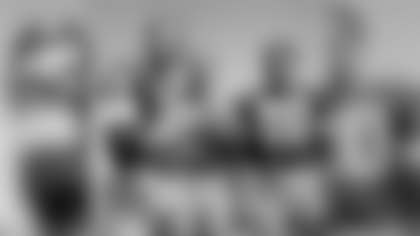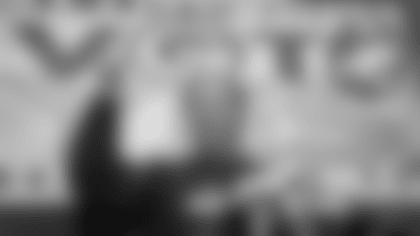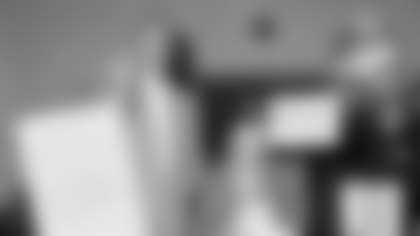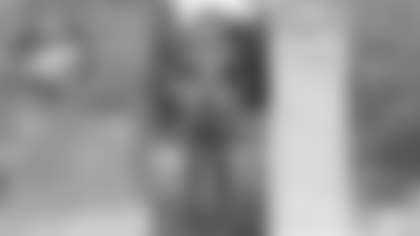Rob from Rochester, NY
Earlier this year, in a response to Dan, you shared that you aren't able to answer as many questions as you'd wish because of your research efforts. Your response implies research beyond what your regular readers are already familiar with – your magisterial tome, “The Greatest Story in Sports,” and your periodic columns answering history-based Packers questions. Can you share with us what the research you wish to continue is about and when we might see results?
With thousands of old newspapers now available online, there's a bottomless pit of research material that can still be explored on Packers history. And I confess that once I get started, it's like an addiction. As I occasionally tell people, the more I learn the less I know. Every new nugget of information raises more questions and begs for more digging.
What I've started doing is researching the history of the NFL Draft for stories that we can post at packers.com in the months leading up to Green Bay hosting the event in 2025. My goal might be unrealistic so I'm basically keeping it to myself for now, but I want to give it a shot.
Anyway, the plan going forward is that this will be my final Q&A or weekly post until the end of training camp because we'll have plenty of copy from Mike, Wes, Larry and others about what's happening with the current team. That will allow me to work on my draft plans, and then we're going to examine where things stand once the regular season starts.

Mike from Green Bay
My question is about Barty Smith from the 1970s. As a young boy, he was one of my favorite players, along with Eric Torkelson. In fact, I wrote to Barty in the hospital after one of his knee surgeries, and he wrote back with an autographed photo. Whatever happened to Barty? At one time, I know he was in the beer distributing business. In 1977, he and Torkelson were running mates in the backfield. Then Terdell Middleton came in 1978 as the halfback, so Torkelson was a backup and Smith's knees became even worse. They were both out of football by 1981.
Mike, those were two of my favorite players, as well. In fact, after Torkelson retired, I played two years of rec basketball with him. We won the league championship once, maybe both years, and we played together inside. I was just a beer-and-pretzel league type guy, but Eric was the most explosive jumper I ever played with. Plus, he played strong. I played rec ball for more than 30 years, sometimes on two or three teams a season, and Eric was one of my all-time favorite teammates.
As for Smith, I talked to Eric last week, and he told me that Barty is retired and still living in Richmond, Va.
Actually, questions about Smith and Torkelson were among the most popular in my inbox.
Joe from Rapid City, S.D., said his aunt was from Antigo, Wis., and lived across the street from Torkelson's wife, who grew up there. "Please tell me more about Mr. Torkelson," Joe asked. Likewise, here was the submission from Derrick of Schenectady, N.Y.: "Give me your take on Eric Torkelson. He played at Burnt Hills High School, about 20 miles from Albany, N.Y., and starred at UConn before becoming a Packer."
Torkelson was an 11th-round draft pick in 1974, which also happened to be my first year as the Packers' beat reporter for the Green Bay Press-Gazette. As a rookie, Torkelson made the team largely on his special-teams play – he had been an all-state defensive back at Burnt Hills – while backing up MacArthur Lane along with second-year man Les Goodman.
In his third season, Torkelson started 11 games at halfback but also split time with Willard Harrell. Torkelson's strong suit at that time probably was his contribution to the passing game, running flares and short crossing routes over the middle. In 1976, he led all backs with 19 catches. A year later, Torkelson was the starter in seven games and finished second in team rushing with 309 yards. But, again, he shared playing time with Harrell and two rookie halfbacks, Nate Simpson and Middleton.
In 1979, Torkelson finished the season as the starting fullback when Smith suffered a knee injury and had his best year running the ball, finishing second in rushing to Middleton with 401 yards and a 4.1 average. Torkelson's final season was 1981.
What kind of player was the 6-foot-2, 205-pound Torkelson?
Maybe the best word to describe him would be versatile. Reliable, too. He was a long strider and a slippery inside runner but lacked breakaway speed for a halfback.
"To me, he's a blue-chipper," offensive backfield coach Bob Lord told me in 1977 in an interview for my annual position-by-position preview before training camp opened. "By that, do I mean he has great hands, great speed and is a great blocker? No, that's not what I mean. But he has that innate quality to give you 100 percent. He'll block for you, catch the ball when you need it, run in a crowd. All he does is gain yardage. He's the type of player you need on every ballclub. He's a handyman."
Zeke Bratkowski, Packers backfield coach in Torkelson's final three seasons, was just as fond of him. "All he does is run, gain yardage and catch passes for you," Bratkowski told me for my preview on the running backs in 1980.
In 1976, before Torkelson's first season as a starter, I wrote in my preview: "Torkelson has limited speed but is tough, smart and consistent. He will rarely beat himself with careless mistakes." In 1981, five years later, before Torkelson's final season, I wrote his days might be numbered, "but he's been counted out more than a glass-jaw fighter and always winds up making a contribution."
As for Smith, Bruce from Plummer, Idaho, wrote in regard to him: "I always thought (Smith) was an underappreciated player. Those teams were pretty bad. Thought him the prototype fullback for that period. Great blocker, receiver and real inside power runner. Just wish he played during better times. Loved watching him."
Bruce, you've pegged Smith well.
At 6-3 and 240-plus pounds, he was a battering blocker. But he also could catch and gain tough yards between the tackles. "I don't think anybody could block better than Barty Smith," Torkelson recently told me.
Selected with the 12th overall pick in 1974, Smith's career got off to a slow start. He suffered both ligament and cartilage damage to a knee in the old Coaches' All-America Game that was played in late June, missed the first six games of his rookie year and carried only nine times in the eight games he played. Plus, when general manager Dan Devine drafted Smith, he had a fullback in John Brockington who was coming off three consecutive 1,000-yard rushing seasons.
In other words, there was a glut at the position.
Smith's playing time increased the next two seasons before he became the starting fullback in 1977. He started 30 of 32 games over the next two seasons but then played in only seven his last two seasons.
In 1977, Smith rushed for 554 yards, averaging 3.3 per carry, and also led the Packers with 37 receptions for a 9.2 average. In 1978, he finished second in rushing to Middleton with 567 yards, a 3.7 average, and again had 37 receptions, second most on the team to James Lofton.
Through it all, Smith endured chronic pain and constant visits to the training room to get his knee drained. In all, Smith underwent four knee surgeries while he was playing.
"You're never the same," Smith told me in 2002. "You have to remember back then, when they did surgery, if there was any cartilage damage, they just yanked it out. There wasn't any of that trimming it up and leaving the buffer in your knee joint. They just yanked it out and you ended up with bone on bone."
While the injuries and surgeries slowed him down and limited his mobility, Smith never stopped splattering would-be tacklers and anyone he was assigned to block.
"Guys used to go to the special-teams meetings just to watch Barty play the up-back on the field goal and extra point team," Larry McCarren told me in 2020. "He'd literally knock the snot out of guys trying to rush off the edge. People would go in there just to watch it."
Torkelson was among them. "Special moments in special-teams meetings when (Smith) was annihilating somebody," he said.
In truth, speed was an issue when Torkelson and Smith were playing in tandem. There was no outside threat with the running game. But at least the two could joke about it. When I interviewed them together in 1980, as their careers were winding down before they even reached the age of 30, Torkelson cracked, "Give us 100 carries, and we both would have gained 100 yards."
Torkelson, by the way, resides in the Green Bay area and was a member of the Packers' board of directors from 2019-22 before being moved to emeritus status.
Tom from Menasha, WI
Eric Torkelson used to live near me. Was Peter Tork of the Monkees his older brother?
No. Peter Tork's given name was Peter Halsten Thorkelson.
Andy from Davenport, IA
I was born in Wisconsin but now live in Iowa. A friend at work who has a Nile Kinnick autograph mentioned that if Nile had gone into the NFL the Packers had interest in him. Is there any correspondence between Nile and the Packers?
Not that I'm aware of. For those who aren't familiar with the Kinnick name, he was a triple-threat back and the 1939 Heisman Trophy winner whose name adorns the University of Iowa football stadium.
In the 1940 NFL Draft, Kinnick was chosen by the Brooklyn Dodgers in the second round as the 14th overall choice. As a result, the Packers passed on him for Minnesota back Hal Van Every when they exercised their first-round choice.
Before the draft, there was speculation that Kinnick would be the No. 1 overall pick, despite his lack of size at 5-8 and 175 pounds. But less than two days before the start of the draft, Kinnick announced: "I'm not going to play pro football. I'm not very big for the game, and besides, I've decided my football is behind me."
It would appear to me that if Kinnick planned to play pro football he would have been selected before the Packers drafted. As it turned out, he played one more game as an amateur. In August 1940, Kinnick started at left halfback and played well when the College All-Stars fell to the Packers, 45-28, before 84,567 fans at Soldier Field.
As you probably know, rather than playing pro ball, Kinnick served as an assistant coach at Iowa for two years while attending law school, then entered the Navy Air Corps and was killed on June 2, 1943, when his engine failed and he crash landed in the Carribean Sea while serving in World War II.
Tom from Chesterfield, VA
I watched the 1963 College All-Star Game on YouTube and noticed Ken Iman playing outside linebacker during the game. Is that the same Iman who went on to be a starting center for the Rams?
Yes. The roster limit when Iman played for the Packers from 1960-63 ranged from 36 to 38, so it was not unusual for young backups to play two positions. Keep in mind, most of the NFL players in the early 1960s had been two-way players in college during the one-platoon era from 1953-64 that placed limits on substitutions. Iman was a center and middle linebacker at Southeast Missouri State.
In 1962, the season before the All-Star Game that you watched, the Packers carried only four linebackers: Ray Nitschke, Dan Currie, Bill Forester and Nelson Toburen. Iman was the backup center to Jim Ringo and the fifth linebacker. Thus, when Currie injured his knee against Philadelphia and Toburen suffered a career-ending neck injury the next week against the Baltimore Colts, Iman had to fill in at left linebacker. He finished the Colts game for Toburen and started the next two before Currie returned to the lineup.
As it turned out, Iman was the player to be named later when Vince Lombardi desperately worked out a post-deadline trade to acquire Zeke Bratkowski in the 1963 season after Bart Starr was injured. That's how Iman wound up spending 10 years as the Rams' starting center.
Tim from Kiel, WI
In 1994, my brother and his wife had their wedding reception at the Holiday Inn in Appleton, which is now a Doubletree by Hilton. Was that the same hotel that Dallas stayed at the night before the Ice Bowl?
No, what's now the Doubletree by Hilton was not the Holiday Inn where the Cowboys stayed. I thought so too but readers Kelly of Appleton and Dan of De Pere have corrected me. The Cowboys stayed at the two-story Holiday Inn just south of the Outagamie County line in the Town of Menasha before the Ice Bowl. By the mid-1970s, the motel had become an Excel Inn. The building still stands and has undergone several name changes.
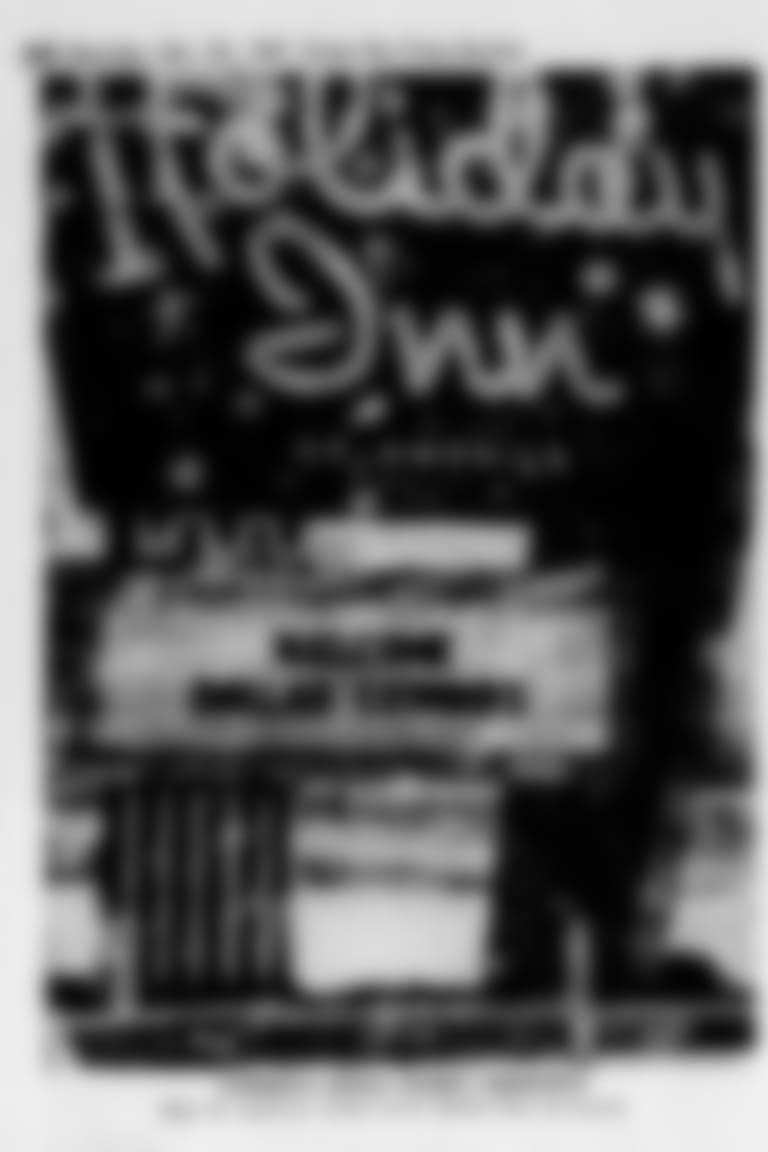
Linda from Grandview, MO
My ex-husband always claimed he was a Packer player from 1968-69, but I have never been able to confirm it. His name was David Eldon Leach Jr. He is now deceased but I'm still curious.
No, he never played for the Packers nor was he ever drafted by them or any other NFL team. In fact, I could find no record of him even going to training camp with the Packers those years.
I found his obituary at the Hixson-Klein Funeral Home site in Missouri, and it was stated there that he played for the Packers in 1968-69. It also mentioned that he attended Truman High School in Independence, Mo., and it appears that he played football there in the fall of 1965. That means, if he graduated from high school in the spring of 1966, whether he played college football or not, he wouldn't have been eligible to play in the NFL until 1970.
Believe it or not, maybe the most shocking thing I've learned in more than a decade as Packers historian is how many men claimed to have played for the Packers and never did. And this isn't the first time I've seen it included in an obituary.
Troy from Westminster, CO
This has little relevance, but it's a matter of curiosity to me. Longtime Bears quarterback Bobby Douglass ended his career with the Packers in 1978. He completed one pass in his final game, Dec. 17, against the Los Angeles Rams. In that game, rookie James Lofton caught five passes. Is there any record if Douglass completed his last pass to Lofton?
There is a record, and no he didn't complete his last pass to Lofton. Douglass replaced David Whitehurst for the final two plays of that game and attempted two passes. The first was intended for Lofton but fell incomplete. On fourth-and-20, fullback Jim Culbreath caught Douglass' last career pass for 19 yards. Whitehurst had played that day with a painful shoulder injury and had been sacked on the play prior to Douglass replacing him.
Beth from Boring, OR
In your book, "The Greatest Story in Sports," you stated that Rockwood Lodge was purchased from the White Fathers by Frank DeMeuse and Harry Daul. The only Harry Daul that I remember delivered block ice on his shoulder into my dad's tavern (Harvey's Club, log building, on S. Washington St., next to the Packer Ticket Office). Could this be the same Harry Daul?
The Harry Daul who sold Rockwood Lodge to the Packers in May 1946 lived at 1321 Emilie Street and his wife's name was Doris. With the help of Jeff GildersonDuwe in the local history department of the Brown County Library, we feel certain that he'd be the only local possibility.
I can't tell you for certain that he delivered ice to your dad's bar, but he owned Union Sales Co., a coin-operated or vending machine business at the time on N. Adams St. in downtown Green Bay. And if you distinctly remember the Packers office being across the street at the time, it wouldn't have been until 1949 when they moved into that building. Daul was still proprietor then of Union Sales and would have been about 42 years old.








